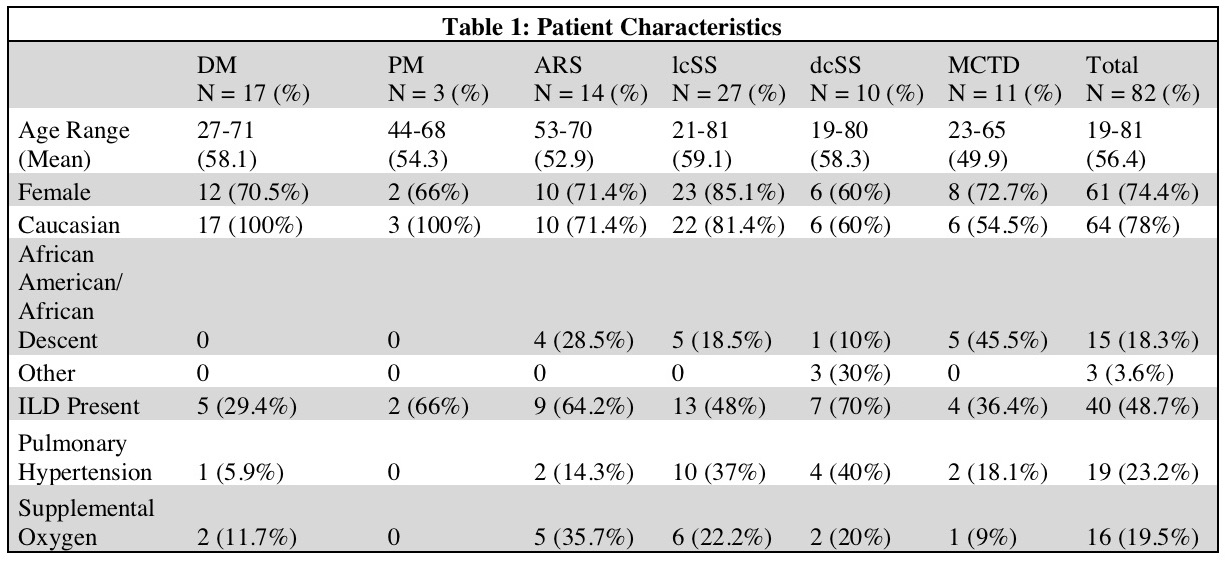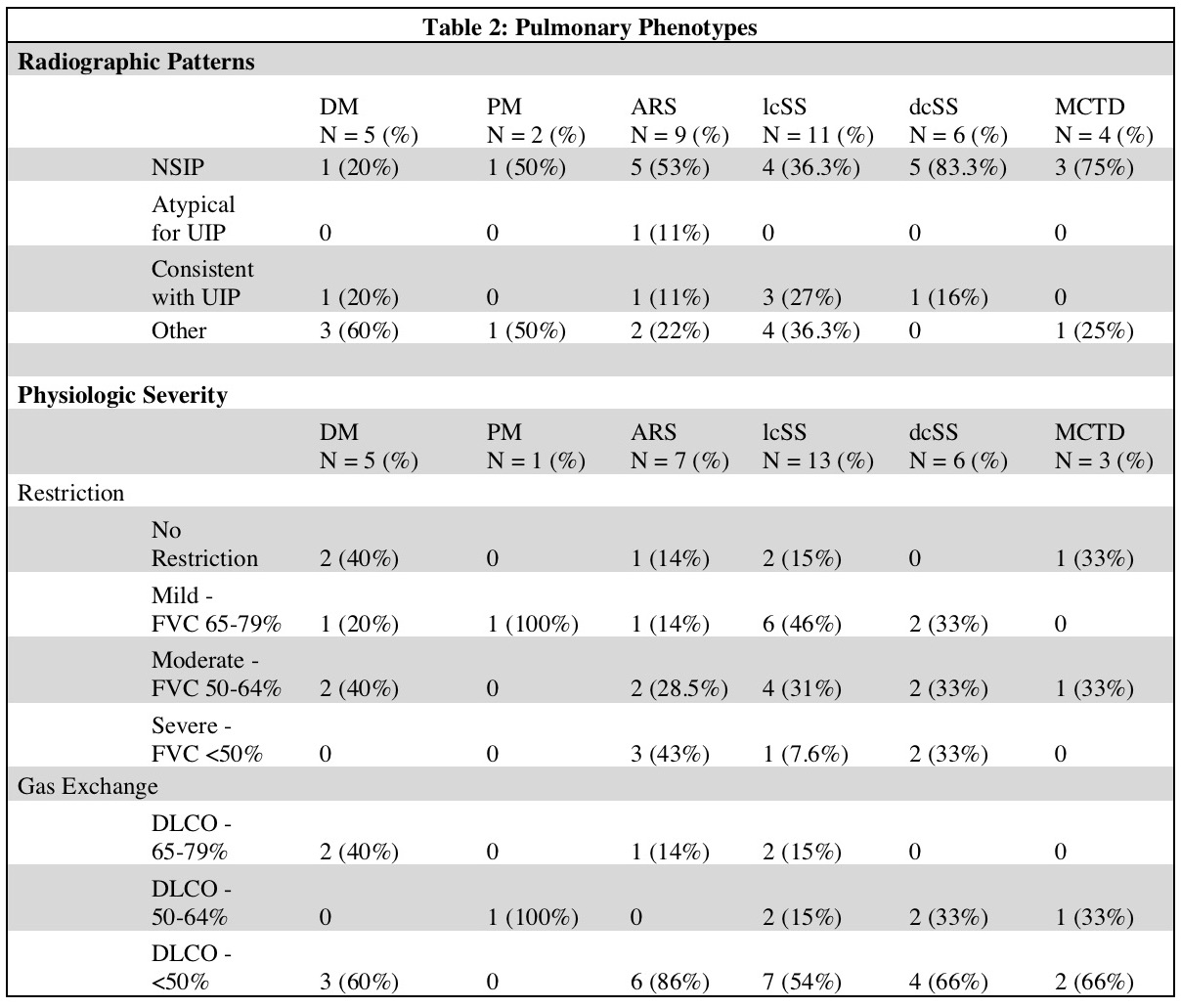Session Information
Date: Sunday, October 21, 2018
Title: Muscle Biology, Myositis and Myopathies Poster I: Clinical Features and Disease Course
Session Type: ACR Poster Session A
Session Time: 9:00AM-11:00AM
Background/Purpose:
Interstitial lung disease (ILD) is a significant cause of morbidity and mortality in connective tissue diseases (CTDs). The purpose of this study is to compare the prevalence, physiology, and radiographic findings in different CTDs to formulate rational screening/monitoring plans.
Methods:
Patients diagnosed with dermatomyositis (DM), polymyositis (PM), anti-aminoacyl tRNA synthetase syndrome (ARS), limited cutaneous systemic sclerosis (lcSS), diffuse cutaneous systemic sclerosis (dcSS), or mixed connective tissue disease (MCTD) were identified from the MYSTIC cohort (VUMC IRB 141415); the presence of ILD was identified from chart abstraction. Radiographic patterns of ILD were ascertained from the initial CT scan. American Thoracic Society Criteria were used to grade severity by forced vital capacity (FVC) and diffusing lung capacity for carbon monoxide (DLCO) percentages; if multiple pulmonary function tests (PFTs) were available, the most severe value was used.
Results:
Patient characteristics are shown in Table 1. Forty of 71 patients had ILD with the highest prevalence in dcSS (70%), ARS (64.2%), and lcSS (48%). Nonspecific interstitial pneumonia (NSIP) was the most common radiographic pattern (Table 2), but 27% of patients with lcSS had a usual interstitial pneumonia (UIP) pattern. Severe restriction was present in 43% of ARS patients and 33% of dcSS patients. Similarly, 86% of ARS patients and 66% of dcSS had severe gas exchange deficits. Supplemental oxygen use was 35.7% in ARS and 20% in dcSS. Despite the high prevalence of ILD in lcSS, physiologic severity was less than ARS or dcSS. FVC was mildly restricted in 46% of lcSS cases; only one patient had severe restriction. Fifty four percent of lcSS patients had severe reduction in DLCO, but this is likely due to concomitant pulmonary hypertension. Overall, ILD in dcSS and ARS was much more severe than lcSS, DM, PM, or MCTD.
Conclusion:
In our cohort, ARS and dcSS had similar prevalence and severity of ILD. While expert opinion promotes screening and monitoring for ILD in systemic sclerosis (SSc), there are currently no clear recommendations for ARS. This data indicates that screening CT/PFTs are indicated for ARS as well as SSc.
To cite this abstract in AMA style:
Sohn B, Annapureddy N, Dudenhofer R, Barnado A, Crofford L, Wilfong E. Patients with Anti-Synthetase Syndrome Have a Similar Prevalence and Severity of Interstitial Lung Disease to Systemic Sclerosis [abstract]. Arthritis Rheumatol. 2018; 70 (suppl 9). https://acrabstracts.org/abstract/patients-with-anti-synthetase-syndrome-have-a-similar-prevalence-and-severity-of-interstitial-lung-disease-to-systemic-sclerosis/. Accessed .« Back to 2018 ACR/ARHP Annual Meeting
ACR Meeting Abstracts - https://acrabstracts.org/abstract/patients-with-anti-synthetase-syndrome-have-a-similar-prevalence-and-severity-of-interstitial-lung-disease-to-systemic-sclerosis/


